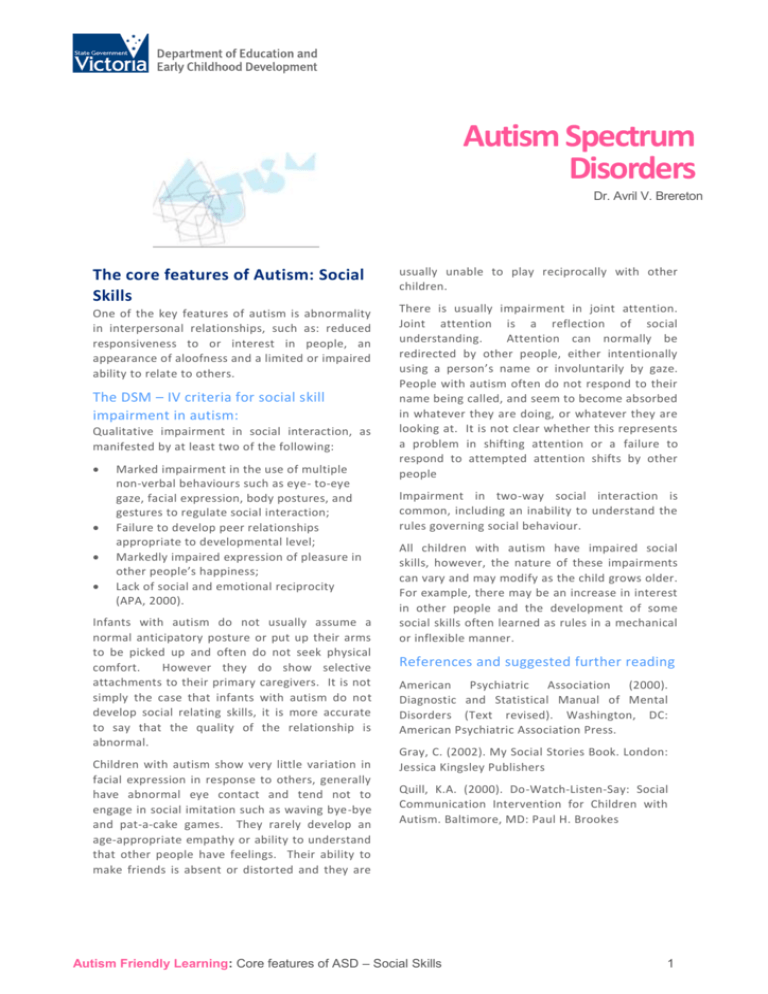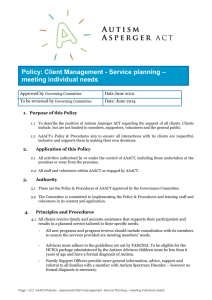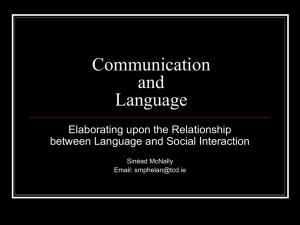The core features of autism
advertisement

Autism Spectrum Disorders Dr. Avril V. Brereton The core features of Autism: Social Skills One of the key features of autism is abnormality in interpersonal relationships, such as: reduced responsiveness to or interest in people, an appearance of aloofness and a limited or impaired ability to relate to others. The DSM – IV criteria for social skill impairment in autism: Qualitative impairment in social interaction, as manifested by at least two of the following: Marked impairment in the use of multiple non-verbal behaviours such as eye- to-eye gaze, facial expression, body postures, and gestures to regulate social interaction; Failure to develop peer relationships appropriate to developmental level; Markedly impaired expression of pleasure in other people’s happiness; Lack of social and emotional reciprocity (APA, 2000). Infants with autism do not usually assume a normal anticipatory posture or put up their arms to be picked up and often do not seek physical comfort. However they do show selective attachments to their primary caregivers. It is not simply the case that infants with autism do not develop social relating skills, it is more accurate to say that the quality of the relationship is abnormal. Children with autism show very little variation in facial expression in response to others, generally have abnormal eye contact and tend not to engage in social imitation such as waving bye-bye and pat-a-cake games. They rarely develop an age-appropriate empathy or ability to understand that other people have feelings. Their ability to make friends is absent or distorted and they are usually unable to play reciprocally with other children. There is usually impairment in joint attention. Joint attention is a reflection of social understanding. Attention can normally be redirected by other people, either intentionally using a person’s name or involuntarily by gaze. People with autism often do not respond to their name being called, and seem to become absorbed in whatever they are doing, or whatever they are looking at. It is not clear whether this represents a problem in shifting attention or a failure to respond to attempted attention shifts by other people Impairment in two-way social interaction is common, including an inability to understand the rules governing social behaviour. All children with autism have impaired social skills, however, the nature of these impairments can vary and may modify as the child grows older. For example, there may be an increase in interest in other people and the development of some social skills often learned as rules in a mechanical or inflexible manner. References and suggested further reading American Psychiatric Association (2000). Diagnostic and Statistical Manual of Mental Disorders (Text revised). Washington, DC: American Psychiatric Association Press. Gray, C. (2002). My Social Stories Book. London: Jessica Kingsley Publishers Quill, K.A. (2000). Do-Watch-Listen-Say: Social Communication Intervention for Children with Autism. Baltimore, MD: Paul H. Brookes Autism Friendly Learning: Core features of ASD – Social Skills 1








